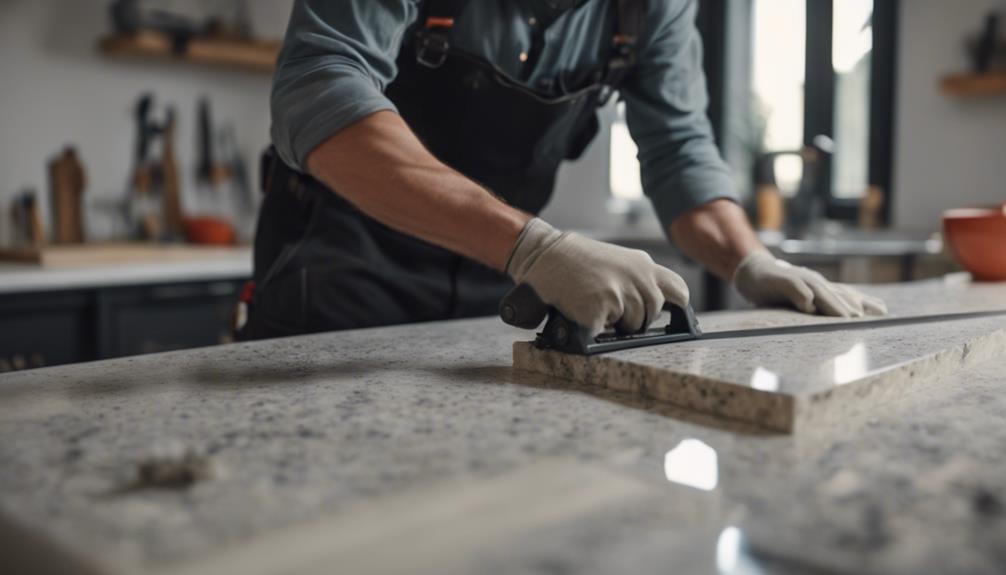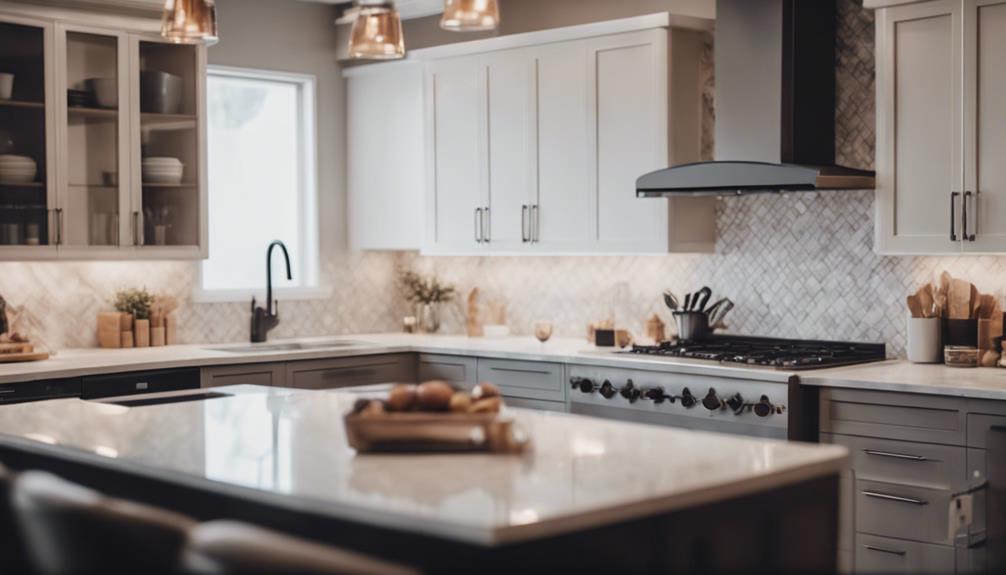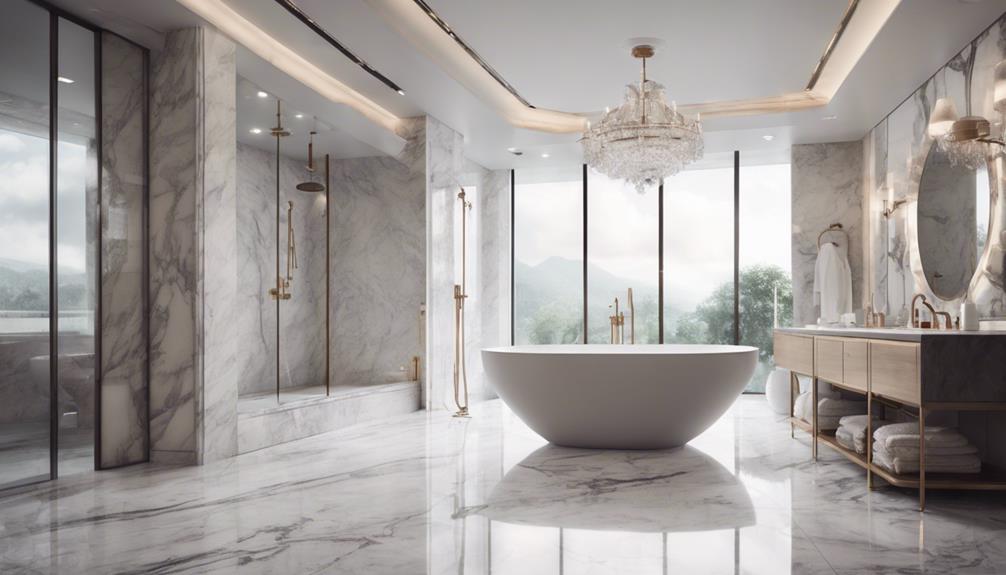Exploring the use of Onyx stone in historic buildings presents a sophisticated approach to the conservation and design of these structures. Understanding the unique properties of Onyx, along with developing a specific maintenance routine, can significantly enhance the visual charm of historical edifices. The careful consideration of this material promotes a deeper appreciation for its timeless beauty and the historical significance embedded within architectural elements.
By focusing on the delicate balance between preservation methods, design choices, and maintenance advice for Onyx stone features, it is possible to uphold the aesthetic and historical integrity of such buildings. This approach not only ensures the longevity of Onyx stone in architectural applications but also celebrates its role in enriching our heritage landscapes.
Importance of Onyx Stone Features
Onyx Stone in Historic Architecture
In historic architecture, onyx stone really stands out because it mixes beauty and tradition in a unique way. This stone isn't just another pretty feature; its varying patterns and colours are a testament to the skilled hands that worked with it. When architects choose onyx for a building, they're not just picking a material; they're selecting something that will add depth and character to the space.
Why Onyx Stone is a Must-Have
You might wonder, what makes onyx so special? Well, it's all about the look and the feel. When you light up onyx stone, it transforms the space with a warm, welcoming glow. This isn't just about making a room brighter; it's about creating an atmosphere. Preserving these onyx features is crucial. It's not just about keeping a building looking good; it's about holding onto a piece of history and showing off the craftsmanship that went into its creation.
The Beauty of Onyx in Design
Incorporating onyx into historic buildings does more than just catch the eye; it adds a layer of elegance and charm that modern materials can't match. Imagine walking into a room where the onyx features are lit up, casting a soft, inviting light. It's these moments that make historic buildings so captivating. And it's not just about aesthetics; it's a way to keep the spirit of the past alive and kicking.
Considerations for Historic Building Integration
When thinking about adding onyx stone features to historic buildings, it's not just about plonking them in and hoping for the best. You've got to really think about what the building can handle, how it's going to look, making sure it lasts, and keeping it all above board with the rules. Let's chat through what you need to keep in mind:
Honouring History and Style
Choosing the right onyx stones is a bit like picking the perfect accessory; you want something that not only looks good but also feels right. It's crucial to pick stones that not only boost the building's historical charm but also blend seamlessly with its architectural style. This ensures that the addition feels like it was always meant to be there, honouring the building's heritage and enhancing its aesthetic appeal.
Working With the Experts
You wouldn't try to fix a vintage car without a mechanic, right? Similarly, when it comes to fitting onyx stones into an old building, it's smart to get some expert advice. Preservation specialists know their stuff. They can guide you on how to introduce these features without messing with the building's original vibe. It's all about keeping it authentic while giving it that extra oomph.
Keeping it Sturdy and Legal
The last thing you want is for your beautiful onyx addition to become a safety hazard or, worse, land you in trouble because it doesn't meet the local rules. Ensuring the building can physically support the new features is top priority. It's also vital to double-check that everything you're doing is compliant with building codes and regulations. This way, you make sure that your onyx-enhanced historic building stands strong and legal for many more years.
Design Elements With Onyx Stone
Exploring Onyx in Historic Building Designs
Onyx stone brings an unmatched level of elegance and sophistication to the design of historic buildings, transforming spaces into areas of timeless beauty and charm. This mineral is celebrated for its translucent qualities and striking banding patterns, making it an exceptional choice for enhancing architectural elements. Its inclusion in buildings through columns, balustrades, fireplaces, vases, sculptures, and decorative items introduces a unique aesthetic appeal.
Variety in Onyx Colours
The array of onyx colours, including Black Onyx, Sardonyx, Green Onyx, Blue Onyx, and Red Onyx, offers designers a broad spectrum for crafting captivating and attractive designs. This variety ensures that every piece can stand out, contributing to the overall allure of the space.
Onyx's Deeper Meaning
But it's not just about looks. Onyx is also thought to have spiritual benefits, providing protection and a grounding effect. Incorporating onyx into historic buildings does more than just enhance their beauty; it also adds a meaningful connection to the past. This aspect brings depth to the design, enriching spaces with cultural and historical layers that resonate with people on a deeper level.
Why Onyx is a Favourite
Choosing onyx for architectural features isn't just about following a trend. It's about creating spaces that are not only visually stunning but also meaningful. The unique properties of onyx, combined with its spiritual significance, make it a beloved choice for bringing historical buildings to life, ensuring they remain relevant and admired for generations to come.
Preservation Techniques for Onyx Features
Preserving onyx features in historic buildings requires meticulous care.
Starting with gentle cleaning using mild soapy solutions is essential to maintain their natural beauty.
Repairing any damage to onyx surfaces should be done with caution to prevent further harm to the delicate stone.
Sealing onyx surfaces and storing them properly are key steps to ensuring their longevity and protection from potential damage in historic structures.
Cleaning Onyx Surfaces
Maintaining Onyx Surfaces in Historic Buildings
When it comes to keeping onyx surfaces shining and intact within historic buildings, there's a bit of know-how involved. First off, reaching for pH-neutral cleaners and a soft brush is a smart move. Why? Because onyx is quite a sensitive material, and using anything too harsh can scratch or dull its beautiful finish.
Avoid Harsh Cleaning
We all want to keep things spick and span, but when you're dealing with onyx, it's crucial to steer clear of strong cleaning methods. Imagine using a scouring pad on this delicate stone – not a good idea, right? That's why opting for softer, gentler approaches not only keeps the surface looking pristine but also helps avoid any unwanted damage.
Act Fast on Spills
Now, let's talk spills. They're bound to happen, but the key with onyx is not to dilly-dally. Wiping up any spills immediately can be the difference between an easy clean-up and a stubborn stain. Onyx can be quite porous, meaning liquids can seep in and cause discolouration if they're not dealt with quickly.
Regular Check-ups
Keeping an eye out for any signs of damage like scratches, chips, or even cracks is another must-do. Regular check-ups allow you to catch any issues early on, making them much easier to tackle. It's all about preserving that historic charm for as long as possible.
Seek Professional Help
And sometimes, despite our best efforts, onyx surfaces might need a bit more TLC than we can provide. That's when calling in the professionals for restoration services comes into play. They have the expertise and equipment needed to breathe life back into these surfaces, ensuring they continue to add character and beauty to historic buildings for years to come.
In essence, caring for onyx in historic buildings boils down to gentle cleaning, being quick on the draw with spills, keeping a vigilant eye for damage, and knowing when it's time to call in the experts. By following these steps, we can help keep these majestic surfaces looking their best.
Repairing Damaged Onyx
Assessing Damage on Onyx Surfaces
When it comes to restoring onyx surfaces in old buildings, the first step is to take a good look at the damage. You might find cracks, scratches, chips, discoloration, and stains. It's crucial to figure out the extent of the damage so you can choose the best way to fix it. After all, each mark or crack tells a story of what the stone has been through.
Restoration Techniques for Onyx
Restoring onyx needs special care and attention to detail. For small scratches and chips, a polishing compound works wonders. It's like giving the onyx a mini makeover. For more serious damage, epoxy is your go-to. It acts like a magic glue that brings pieces together and fills in the gaps. And if you're dealing with deep stains, a poultice is the best option. It's like a detox mask for the onyx, pulling out impurities and leaving it fresh. After fixing it up, don't forget to apply a penetrating sealer. This is the onyx's shield, protecting it from future damage and ensuring it stays gorgeous for longer.
Why Professional Restoration Matters
Getting an expert to restore onyx stone is crucial. They know their stuff. Think of them as the doctors of the onyx world. They have the tools, the skills, and the knowledge to bring back the natural beauty of the stone. Without professional restoration, you risk damaging the onyx further, which is the last thing you want in a historic building. These pros not only fix the damage but also preserve the stone's integrity, making sure it continues to add beauty and character to the building for years to come.
Sealing Onyx Surfaces
Ensuring the Durability of Onyx Surfaces
To make sure onyx surfaces in historic buildings stay beautiful and intact for the long haul, it's pretty crucial to apply a penetrating sealer every six months. This is not just about keeping them looking good; it's about protecting these surfaces from stains and damage. When you seal onyx, you're basically giving it a shield that stops liquids from getting into the stone. This is key because once those liquids get in, they can cause discoloration and weaken the stone.
Why Sealing Matters
So, why bother sealing onyx? First off, it's a great way to combat staining. Think about it – historic buildings are often open to the public, and accidents happen. Without that layer of protection, a simple spill could lead to a permanent stain on a beautiful onyx surface. Secondly, sealing keeps water and other liquids out, preserving the stone's integrity. And it's not just about keeping them looking pristine; it's about preserving these pieces of history for future generations to admire.
Enhanced Durability
Another big win of regular sealing is how it steps up the onyx's resistance to wear and tear. We're talking about surfaces that can stand the test of time, even in high-traffic areas. This is especially important in historic buildings, where preserving the original architecture and materials is crucial. By making sealing part of the routine maintenance, we can ensure that these onyx features remain as stunning and structurally sound as they were intended to be.
In a nutshell, regular sealing is a small but mighty way to protect and preserve onyx surfaces in historic buildings. It's about keeping the past alive and well for the future to enjoy. So, let's not overlook the importance of this simple, yet effective, preservation technique. By keeping up with this task, we're playing a part in safeguarding our heritage.
Enhancing Historical Aesthetics With Onyx
Enhancing Historical Aesthetics with Onyx
Incorporating onyx stone into a historical building can really boost its charm and keep its architectural beauty intact. Onyx isn't just about looks; it brings an air of luxury and sophistication that few other materials can. It's the unique patterns and eye-catching presence that make onyx a standout choice. Plus, it's tough. This means the building's historical allure isn't just maintained but is set to last, giving it a timeless elegance. When onyx is used thoughtfully, it doesn't overshadow the building's original character; instead, it complements it, making the architecture even more beautiful.
Why Onyx is a Game-Changer for Historic Buildings
- Historical Charm: Onyx has a special way of enhancing the historical character of a building. It's like it has this ability to fit right in while bringing something new and exciting to the table.
- Luxury and Sophistication: There's something about onyx that just screams luxury. It adds an upscale feel to the design, making the building stand out in a subtle, classy way.
- Unique Patterns: The patterns you get with onyx are unlike anything else. They draw the eye and create a focal point that's both interesting and beautiful.
- Durability: Here's the practical part – onyx is durable. It's not just a pretty face; it's a material that can stand the test of time, ensuring the building's beauty lasts.
Incorporating onyx into a historical building is more than just a design choice; it's a way to bridge the past with a touch of modern luxury. It's about preserving what's already there while adding something unique and durable. When you walk into a space that's been enhanced with onyx, you can't help but feel that mix of history and contemporary elegance. It's a testament to the building's story, adding layers to its character without taking anything away.
Maintenance Tips for Onyx Stone
Caring for Onyx Stone in Historic Buildings
Gentle Cleaning is Key: To keep onyx stone looking its best, it's important to clean it the right way. Harsh chemicals can scratch and dull the surface, so it's better to stick with a mild soap solution and a soft cloth. This simple method can make a huge difference in maintaining the stone's shine and preventing damage.
Storing Onyx Stone Properly: If you're not displaying your onyx pieces, how you store them matters a lot. Wrapping them individually and placing them in separate compartments can save them from scratches and keep them in tip-top condition. It's like giving each piece its own little safe space away from harmful contact.
Inspections and Professional Touch-ups: It's wise to have experts check on your onyx stone regularly. They can spot potential problems early on, saving you from bigger headaches down the line. And when it comes to keeping that glossy finish, professional re-polishing can do wonders. It's about keeping your onyx in the best shape for as long as possible, ensuring it continues to add beauty to your space.
Showcasing Onyx in Architectural Features
Incorporating Onyx in Historic Buildings
Incorporating onyx stone into the design of historic buildings brings out a certain sophistication and warmth that's hard to match. Think about walking into a room where the walls gently glow, thanks to the translucent quality of onyx panels that have been cleverly backlit. It's not just about adding a luxury element; it's about creating an atmosphere that's both welcoming and rich in character.
Why Onyx Stands Out
Onyx isn't just another pretty stone. Its natural colour variations can range from deep blacks to soft creams, each piece unique, which allows designers to create truly bespoke spaces. Moreover, onyx has this magical ability to diffuse light, making it perfect for creating focal points in a room without it feeling too harsh or overpowering. Imagine a fireplace that doesn't just give off warmth but also glows softly, adding to the room's ambiance.
Versatility and Durability
What makes onyx a go-to choice for both architects and interior designers is its versatility. You can use it for flooring, giving a room an instant uplift in terms of elegance. Or think about a grand staircase in a historic hotel, where each step is crafted from onyx, offering not just a path upwards but an art piece. And it's not just about looks; onyx is also known for its durability, making it ideal for areas that see a lot of foot traffic.
Maintenance Is Key
Of course, to keep that luxurious look and feel, onyx needs a bit of TLC. Regular maintenance ensures that onyx features continue to captivate visitors and preserve the building's historical charm. It's like taking care of a valuable heirloom, ensuring it can be admired for generations to come.
Creating a Luxurious Ambiance
Ultimately, using onyx in the architectural features of historic buildings is about crafting spaces that feel both luxurious and inviting. It's about striking that perfect balance between modern sophistication and timeless beauty. Whether it's for countertops, staircases, or wall panels, onyx can transform an ordinary room into something truly extraordinary.
Conclusion
Adding Onyx stone features to old buildings is like giving them a magical touch. Imagine walking into a room where the light dances on the shiny surfaces of Onyx, creating a spectacle of colours and patterns. It's like stepping into a fairy tale. But, making these enchanting scenes come to life isn't just about placing the stone there; it needs a lot of care and the right knowledge to keep its magic alive.
At Allstone Solutions, we understand the unique qualities of Onyx and how to look after it properly. By mixing Onyx into buildings with history, we help them tell a new story of elegance and mystery. It's all about paying attention and showing love to these pieces, so they can make any space look and feel more luxurious and grand.
If you need assistance in bringing this luxurious touch to your historic building, don't hesitate to reach out to us. We specialise in Granite Installations, Marble Installations, CNC Stone Engraving, Engineered Stone, and can provide all the Installation and Maintenance Info you might need. Our team at Allstone Solutions is here to help you make your vision come to life, ensuring that your property not only preserves its history but also embraces a new level of sophistication with Onyx stone.
Contact Us if you're looking for expert guidance and high-quality service in bringing the timeless beauty of Onyx into your historic setting. Whether it's crafting a bespoke feature or ensuring the stone remains as mesmerising as the day it was installed, we're here to assist.
Furthermore, if you're considering adding this stunning feature to your property, request a quote from us. We're passionate about helping our clients achieve the perfect blend of historical charm and modern luxury. Let Allstone Solutions be your partner in transforming your historic building into a testament of timeless beauty and elegance.















